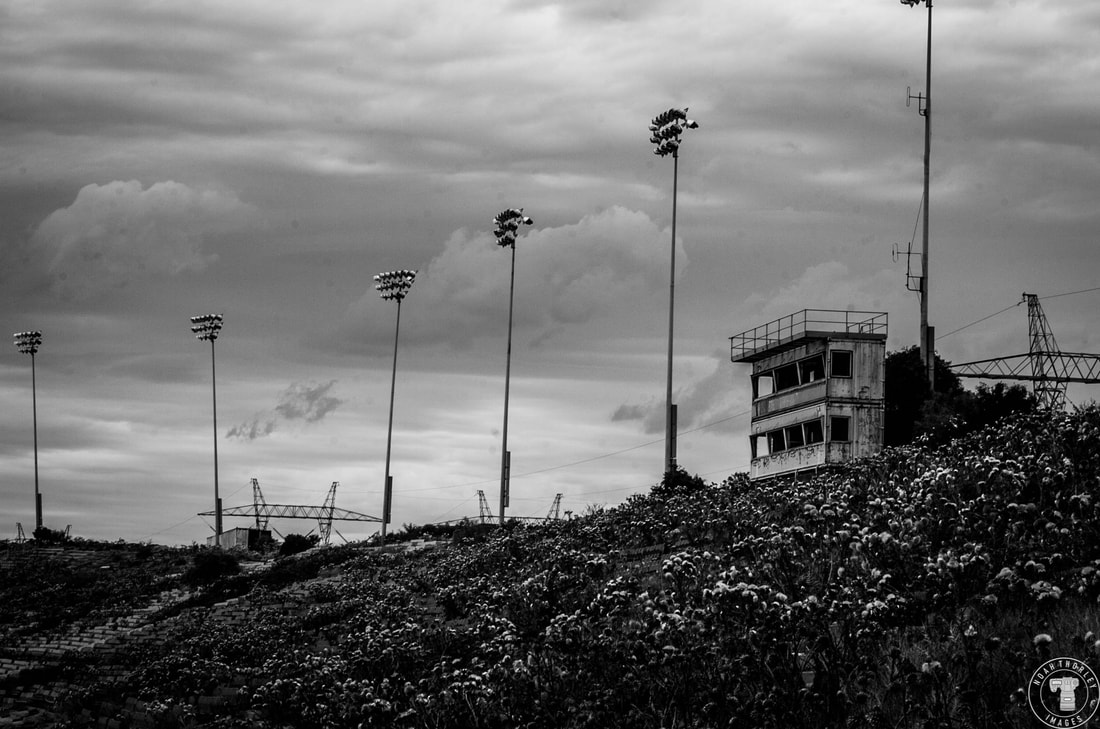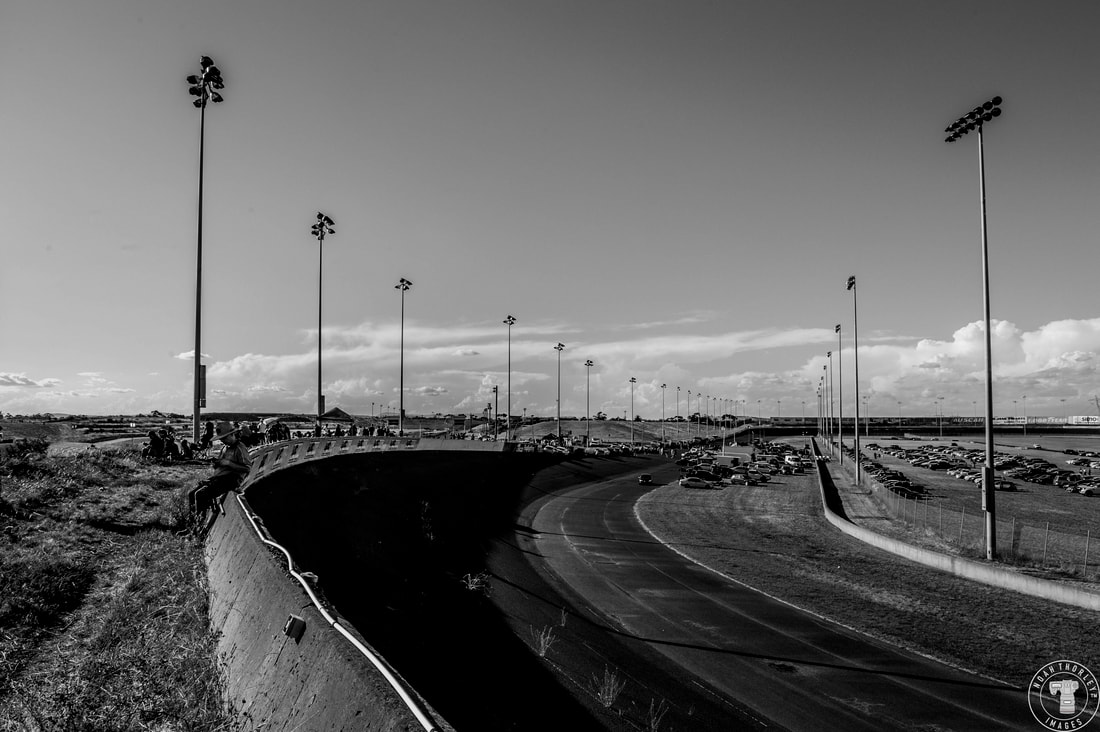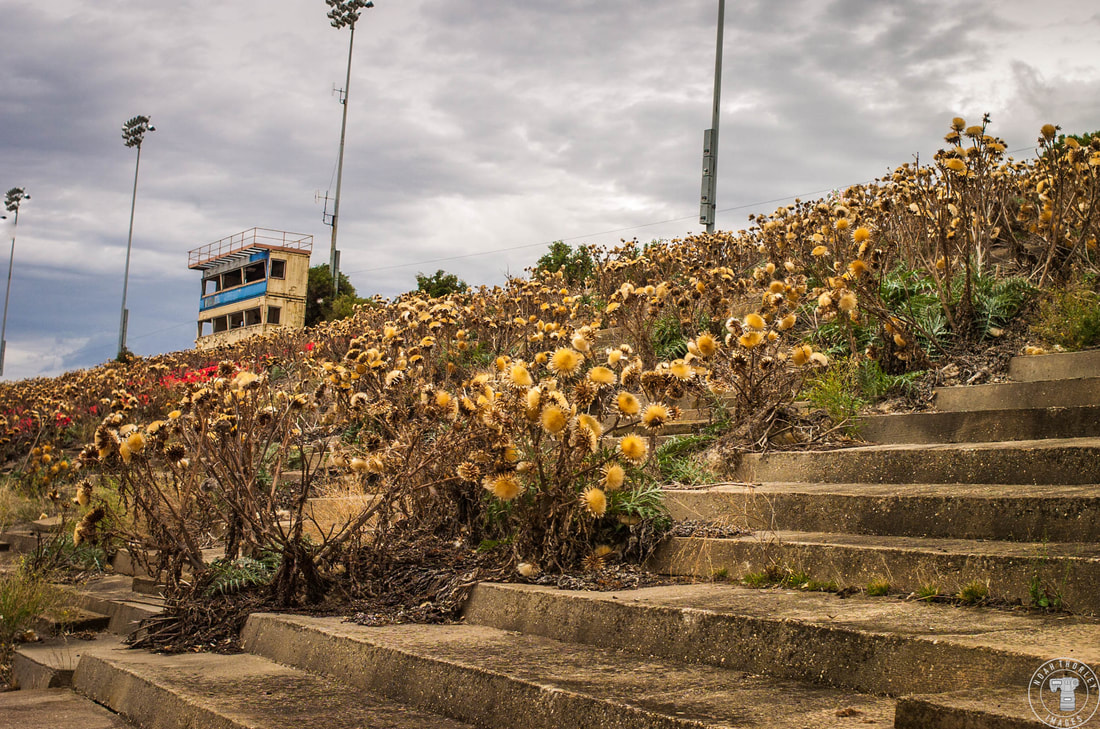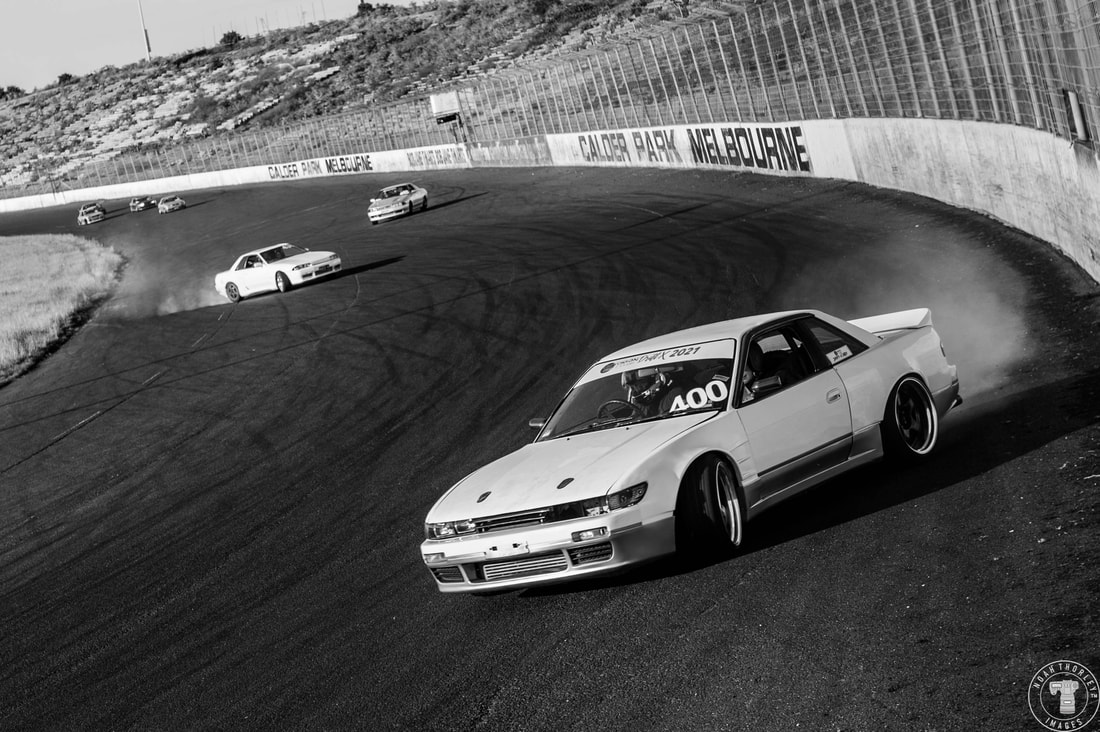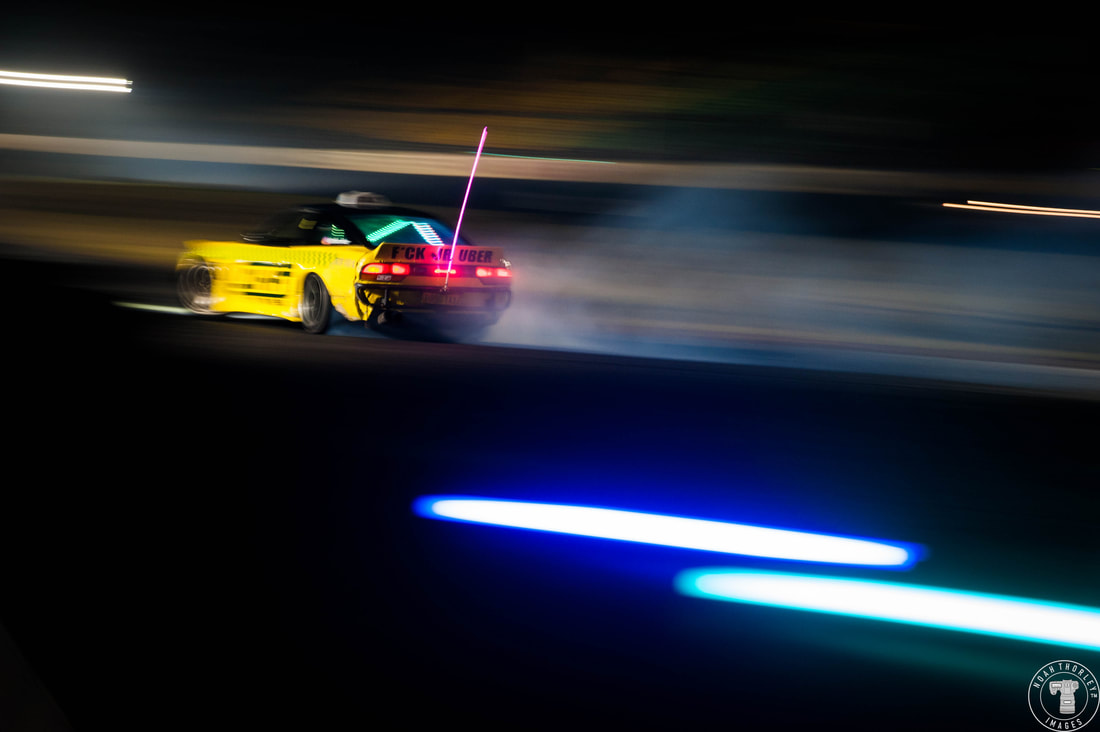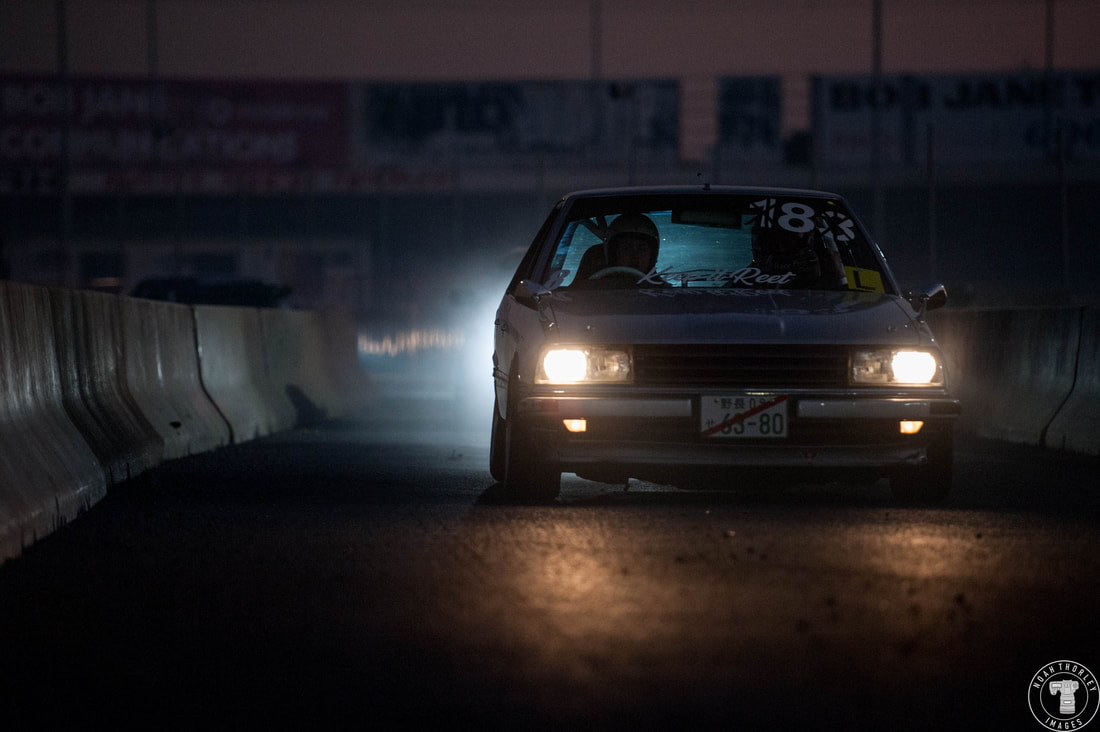|
In the late 1980's, Australia had been bitten by the NASCAR bug. And a 1.1-mile superspeedway just across from a national park would be our home ground for Australia's version of Stock Car Racing, known aptly as 'The Thunderdome'. But before I speak about one of Australia's most unique racetracks, I should mention the complex it is a part of, the Calder Park Raceway. Like many motorsport complexes around the world, Calder Pak Raceway began as a simple dirt track, carved into the ground by local motoring enthusiasts wanting a place to race their FJ Holdens. The track was upgraded to bitumen with its first race meeting taking place on the 14th of January 1962, the layout being very close to what is now the north section of the Calder Park Road Course. During the 1970's tyre tycoon Bob Jane purchased the track, leading to the addition of a southern extension and at the time a rallycross track in the infield. Calder would also begin to host drag racing in addition. A decade later Calder's most prominent feature would be built, a 1.19-mile, 24-degree banked Superspeedway purpose built for modern Stock Car Racing, designed as a smaller version of Charlotte Motor Speedway in the US. Australia's only proper banked mile speedway was a result of Bob Jane striking a deal with NASCAR head honcho Bill France Jr to bring NASCAR down under. The new addition to the Calder Park Motorplex was opened in 1987, with its first race being the 1988 AUSCAR (Australian Stock Car Racing) 200, a 110-lap race one week before NASCAR's first event in Australia. 18-year-old Terri Sawyer would win the first race held at the Thunderdome in her yellow VK Commodore. What made AUSCAR different from NASCAR was the cars were lower spec stock cars, powered by a 5.0L V8 and based off home-built sedans like the Falcon and Commodore, whilst NASCAR was obviously American built cars, powered by 6.0L V8s. In addition, NASCAR raced anti-clockwise on ovals, whilst AUSCAR would race clockwise, due to the steering wheel being on the other side of the car. For NASCAR's first race outside North America, Goodyear would be the only tyre supplier because 1) they had the money and resources to ship tyres overseas, unlike the preferred manufacturer at the time, Hoosier and 2) Goodyear was the title sponsor of the race. Not all, but many drivers and teams would make the trip from the US to compete, with the rest of the field compiling of Australian speedway veterans and touring car legends such as Dick Johnson and Jim Richards. Neil Bonnet would win from pole in his Pontiac Grand Prix. Interestingly, 'The King' Richard Petty would lap the track in a private session with an average speed of 142.85mph, 3 miles faster than Bonnet's pole lap, setting an unofficial record at the time. NASCAR would return later that year for the Christmas 500, with Morgan Shepherd taking a four second victory over Sterling Marlin, the only driver left on the lead lap. Stock Car Racing would continue to grow in Australia in the 90's, with the Thunderdome's last NASCAR race being held in December 1999, a 60-lap sprint. AUSCAR would cease competition in 2001, leading to the slow demise of the track. Now, weeds fill the grandstands instead of race fans, the concrete has slowly shifted over time and the buildings have fallen into disrepair. V8 Supercars haven't raced at the road course since 2001 and recently Drag Racing has had a sabbatical from the drag strip. However, from 2004 to today, a new form of motorsport would compete at the Calder Park Motorsport Complex: Drifting! Using pretty much every section of racetrack at Calder, this cheaper form of motorsport would become the main attraction at not only the Thunderdome, but the road course as well. The most used layout is the FD Layout, first used in 2013 as part of the Australian round of the Formula Drift Asia championship (Yes this is my favourite Calder Park fact and I will continue to mention it at every possible moment). The other layout which shares the same final tight hairpin is the DCA Layout, used for the past Drift Challenge Australia rounds. The Road Course has the most layouts however, using every section of tarmac with Reverse over the Hill, Run the Gauntlet, Keep it Reet's new DT Layout, Run the Wall (using the drag strip end of the circuit) and the Crossover (using the section of track connecting the Road Course to the Thunderdome). In the past 12 months, Calder Park has seen a rise in motorsport events. With more drifting organisations such as Keep it Reet, DriftCadet and now DriftWorx holding more frequent, larger and newer style events at the circuit. Track Days have also returned, with MotorEvents Racing holding a grassroots endurance race on the Dome late last year. Drag Racing is also set to return in the coming weeks with weekly Fast Friday Street Drags (if it can stop raining that is). Although the complex is far from being in a good state, it is great to see motorsport still being enjoyed at the very unique Calder Park Raceway. There have been many calls for many years to see Calder Park refurbished and returned to its glory days, but we are far from that. It will be a very long time, if ever, when we see the return of V8 Supercars to the Road Course but the track also seems to be distancing itself to from the prospect of being completely fruitless. After Covid and more than 15 years of rumours of the track being demolished to make way for housing, to see it still standing and holding frequent events, of now multiple disciplines is a great thing to see and certainly a step in the right direction. I hope we can enjoy Calder Park for many years to come.
To contribute to Calder Park's future, be a part of the Petition to 'Save Calder Park' via Change.org
0 Comments
Leave a Reply. |

